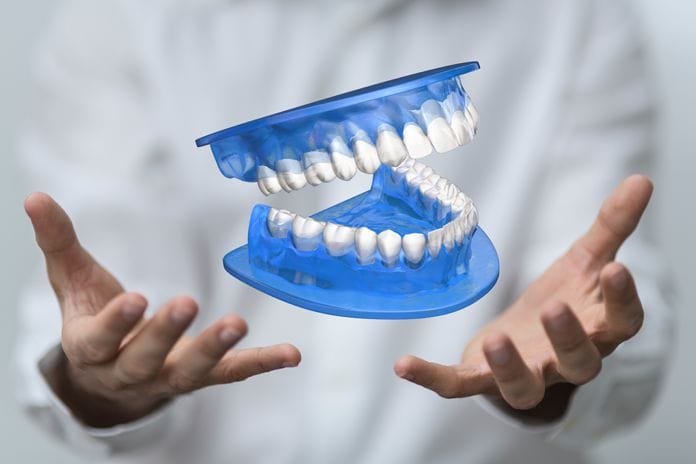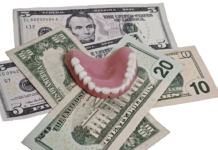Fungal infection is a common threat to patients who wear dentures or other dental prostheses. When left untreated, it can lead to stomatitis and other serious infections which can negatively impact a patient’s oral health. To address this issue, researchers at the University at Buffalo created a study to determine if 3D printed dentures filled with antifungal medication could prevent stomatitis. The study, which was published in Materials Today Communications, demonstrated that 3D rendered dentures with an application of antifungal medication were able to successfully fight off infections while maintaining the strength and durability of conventional dentures.
A Closer Look at Stomatitis
Stomatitis is a general term for inflammation, redness, and swelling of the mouth. Severe cases of stomatitis can interrupt a person’s ability to talk, eat, and sleep. The infection can appear anywhere inside the mouth, from the buccal mucosa to the tongue. Common types of stomatitis are aphthous ulcers (canker sores) and herpes simplex 1 (herpetic stomatitis).
The University of Buffalo Study
For the study, the researchers used a 3D printing machine to fabricate dentures using the dental polymer polymethyl methacrylate and polycaprolactone. Polymethyl methacrylate is a popular material for dentures and bone replacements. The material is naturally compatible with human tissue and can be found in some cosmetic products. Meanwhile, polycaprolactone is a common pliable ingredient used in 3D printing.
The researchers used filled biodegradable, permeable microspheres inside the dental polymer with the antifungal medication Amphotericin B using a syringe pump system. The microspheres were designed to protect the drug during the 3D printing process, so the medication could slowly release as the microspheres gradually degraded. Another set of 3D fabricated dentures without medicine was used as a control.
The strength and durability of the dentures was also tested during the experiment. It held up and did not fracture during the various stress tests. The researchers decided to experiment with up to 10 different layers to see if the dentures could successfully hold more medication. Denture sets with four or less layers were the most effective at dispensing the anti-fungal medication.
The Results of the Study
The results of the study demonstrated the 3D printed denture’s ability to successfully release the drug over sustained time periods and reduce stomatitis and other fungal growth. The researchers believe the polymethyl methacrylate and polycaprolactone were significant factors in the experiment’s success.
Malvika Nagrath, a Professor in the Department of Oral Biology at the School of Dental Medicine at the University at Buffalo and one of the study’s researchers say her team is very optimistic about exploring how applications from their research can be extended to many other clinical therapies, including casts and prosthesis. Praveen Arany, DDS, Ph.D., who is the senior author of the study and an assistant professor in the Department of Oral Biology, revealed their research team plans to make 3D printed dentures fit better and make them stronger using glass fibers and carbon nanotubes in future studies.
The Study’s Impact on the Field of Dentistry
Dr. Arany believes their study’s discovery is monumental. “The major impact of this innovative 3D printing system is its potential impact on saving cost and time,” he says. “The antifungal application could prove invaluable among those highly susceptible to infection, such as the elderly, hospitalized, or disabled patients.”
Unlike current anti-fungal treatment options, like antiseptic mouthwash or baking soda, patients can wear their dentures and don’t have to take any extra steps to prevent infection. Overall, the 3D printing industry is helping the dental industry make significant strides. Dentists can use the technology to create lifelike dentures at a fraction of the cost in a short amount of time.
SEE ALSO: A Beautiful Smile Can Now be 3D Printed with Digital Smile Design
DON’T MISS: 5 Infection Control Mistakes You Might Not Realize You’re Making











